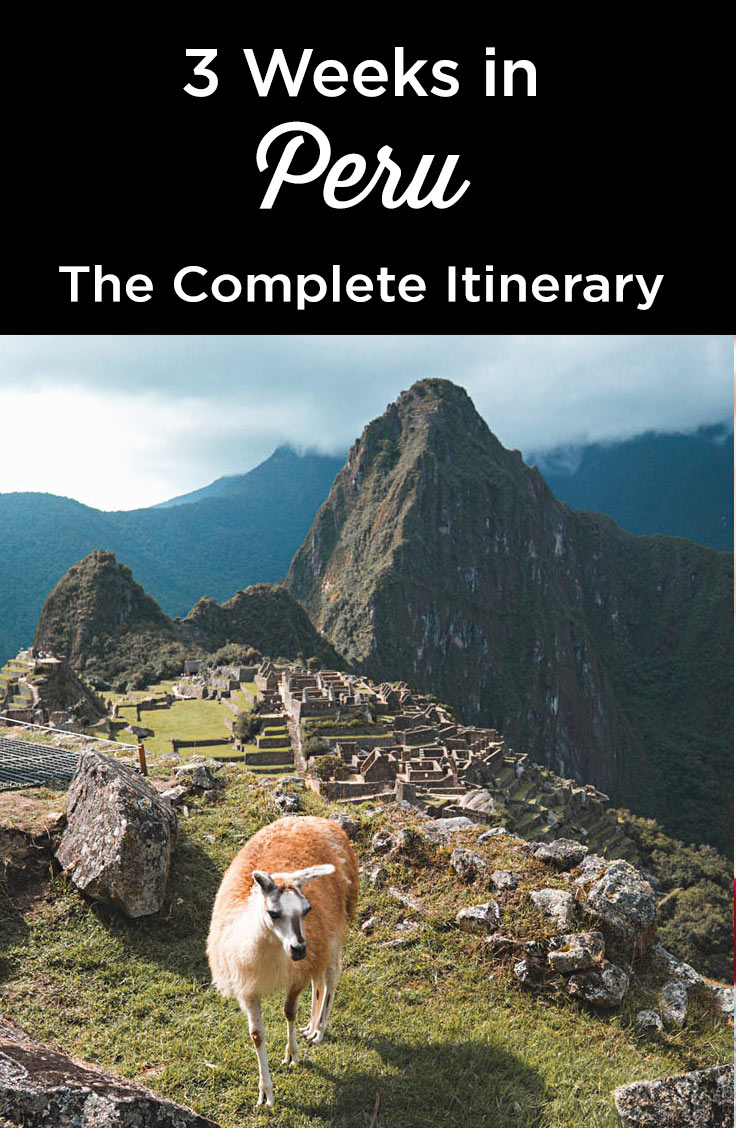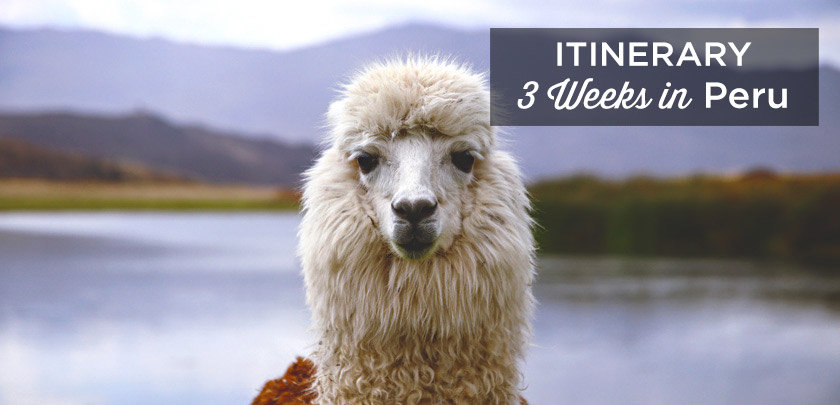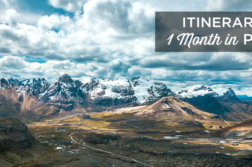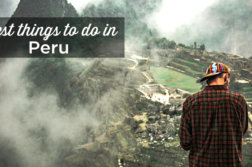Peru itinerary: 3 Weeks – The Ultimate 20-21-Day trip
Planning to spend 3 weeks in Peru?
Great idea!
To help you make the most of your time, I’ve put together this detailed 20 to 21-day itinerary in Peru, combining iconic sites with off-the-beaten-path experiences.
You’ll start in Lima, the vibrant capital, then head south along the coast to explore the dramatic landscapes of Paracas and Nazca. From there, continue on to Arequipa and the majestic Colca Canyon, before sailing across Lake Titicaca and diving into the Inca world of Cusco, the Sacred Valley, and of course, Machu Picchu.
After exploring the Andes, you’ll head deep into the Amazon jungle for a unique wildlife experience, and wrap up your journey with some unforgettable hikes around Huaraz, Peru’s trekking capital.
Thinking of combining Peru and Bolivia? I’ve created a dedicated route just for that—don’t miss it: 3-Week Peru and Bolivia Itinerary.
Throughout this itinerary, you’ll find all my best travel tips to help you plan your route, book transportation, and choose the right places to stay based on your travel style and budget.
Wondering what’s the best route for 20 to 21 days in Peru?
Let’s dive in!
Sommaire
- Peru itinerary: 3 Weeks – The Ultimate 20-21-Day trip
- 1) Lima (1 day)
- 2) Paracas and the Huacachina Oasis (1 day)
- 3) Nazca (1 day)
- 4) Arequipa (1 day)
- 5) Colca Canyon (2-3 days)
- 6) Titicaca (2-3 days)
- 7) Cusco (1-2 days)
- 8) Sacred Valley (2 days)
- 9) Machu Picchu (1 day)
- 10) Amazonia (3 days)
- 11) Huaraz (3-4 days)
- 3 Weeks in Peru: My Final Tips
- Book Your Flight at the Best Price
- Rent a Car in Peru
- Traveling to Peru? These articles will help you!
1) Lima (1 day)
Lima is a great capital that has a lot to offer!
If you only have one day to visit Lima, I suggest you focus on the neighborhoods of Miraflores and Barranco, or the historic center.
You can’t do it all, especially with the city’s legendary traffic.
Option 1: visit Miraflores and Barranco
- Stroll along the promenade facing the Pacific where you will find the Parque del Amor, the Miraflores lighthouse and the Larcomar shopping mall, it is also the best place to watch the sunset.
- Visit the Huaca Pucllana, a 1600 year old pyramid in the heart of Miraflores!
- Explore the surquillo market located very close to the Kennedy Park. It is the best place to try products from all regions of Peru.
- Discover the bohemian neighborhood of Barranco and its street art, the Bridge of Sighs, the workshop-boutique of Peruvian artist Jade Rivera, the Bajada de Baños and its beautiful mansions.
- Taste the pisco sour, the Peruvian cocktail! In Barranco, I recommend Bodega Juanito Barranco or Bodega Piselli for its traditional atmosphere.
I also suggest a very nice bike tour in Barranco and Miraflores, book it here:
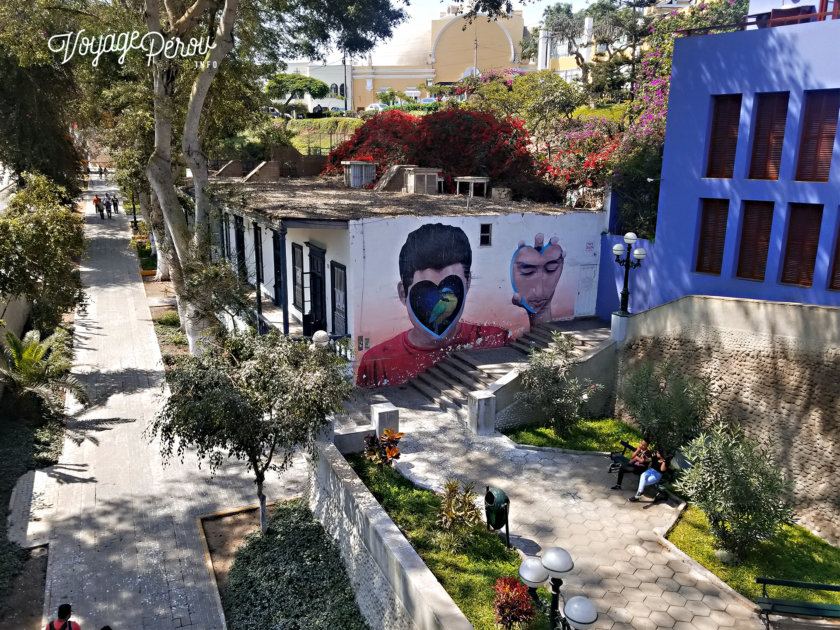
Option 2 : Visit the historic center
- Discover the Plaza de Armas: the Cathedral, the Archbishop’s Palace, the Government Palace, the Chocomuseum and the Pisco Museum.
- Visit the San Francisco Monastery with its cloisters, library, paintings, catacombs and much more.
- Taste the churros de San Francisco, the very best in Lima and an unknown secret for the tourists! Address: Jiron Lampa 268, Lima, open from 13h to 21h30.
- Walk along the street Jiron la Union street, a long pedestrian avenue that connects the Plaza de Armas and the Plaza San Martin where the famous Gran Hotel Bolivar is located.
To see as much as possible in a short time, I recommend you this guided tour of Lima’s historical center of Lima which allows you to discover the most important things, you´ll be picked up at your hotel. Here you can book it:
Option 3: take a gastronomic tour
If you want to discover Peruvian cuisine, Lima is undoubtedly the best place to do it.
I suggest you choose between these two guided tours that will make you discover traditional places and emblematic dishes of Peruvian gastronomy:
- The 25 Best Things to See in Lima
- Visiting Lima in 1 day: The Ultimate Itinerary
- What To Do and See in 2 days in Lima with activities, itineraries and hotel recommendations to organize your visit.
Where to stay in Lima
For these two days, I recommend staying in Miraflores or Barranco, which are safe and well-located neighborhoods:
- Pariwana Hostel Lima: a very friendly youth hostel in the heart of Miraflores. Clean rooms, relaxed vibe, good Wi-Fi, with a restaurant, bar, and rooftop terrace. Dorm bed from only $13 USD and $50 USD for a private room!
- Casita Libertad Homestay: a small house located on a quiet and safe street in the Barranco neighborhood. Cozy atmosphere, very clean, with access to a fully equipped kitchen. Room from only $29 USD per night.
- Casa Andina: a 3-star hotel in Miraflores offering one of the best value-for-money stays in Lima. Modern hotel, recently renovated, with excellent service and an on-site restaurant. Buffet breakfast included, from $87 USD per night.
- Courtyard Lima Miraflores: a modern 4-star hotel perfectly located just steps from Kennedy Park. Comfortable and bright rooms, with a gym and a café-restaurant. From $165 USD per night.
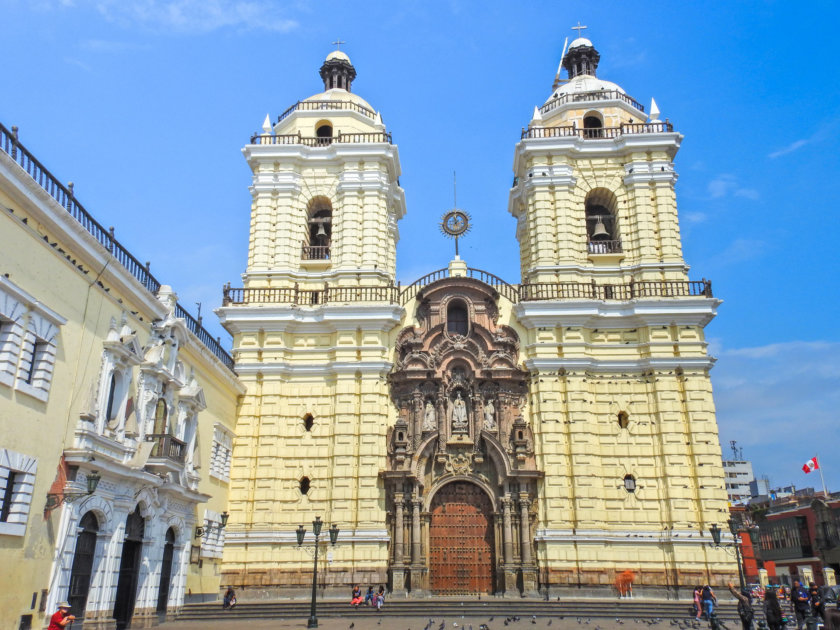
2) Paracas and the Huacachina Oasis (1 day)
Your 3-week Peru itinerary continues with an early morning departure to Paracas, a peaceful desert town by the sea.
Paracas is best known for the stunning Paracas National Reserve and the Ballestas Islands, often called the “Poor Man’s Galapagos” for their rich marine life.
- Don’t miss: My Complete Guide to Paracas
Start your day with a boat tour to the Ballestas Islands (2 hours), where you’ll spot thousands of sea lions, seabirds, and maybe even dolphins.
Along the way, you’ll also see the mysterious Candelabro, a massive 590 ft-long geoglyph etched into the sand—its origin and meaning still remain a mystery.
You can book the tour here:
Discover the Paracas National Reserve and its beaches such as La Mina or El Raspón, and the Julio C. Tello museum that preserves the legacy of the millenarian paracas civilization. You can rent a bike, go by cab or with a tour.
For lunch, I suggest the Lagunillas Bay to eat fresh seafood.
In the afternoon, go to Huacachina Oasis to take a buggy and sandboard tour in the dunes.
You can book the tour here:
In the afternoon, take the bus to Nazca where you will spend the night.
From Lima to Paracas
- By bus: I recommend Peru Bus (3h30- 7h40, terminus: Avenida Mexico 333, La Victoria, Lima) as the others arrive too late to do the tour of Las Ballestas.
Going from Paracas to Nazca
- By bus: 3h-3h30, with Cruz del Sur or Oltursa. The ideal is to leave around 17h from Paracas to arrive around 20h30 in Nazca.
Where to stay in Paracas
- Paracas Backpackers House: a perfectly located hostel in the center of Paracas, clean, with nice common areas, good Wi-Fi, rooftop terrace, and hammocks. Probably the best value for money in its category. From just $9 USD in a dormitory.
- Hotel Residencial Los Frayles: a small and charming hotel near the beach and Paracas restaurants. Simple but comfortable rooms, with good Wi-Fi and a small outdoor pool to relax after a day of sightseeing. From $87 USD per night.
- Casa Andina Select Paracas: a modern and comfortable hotel facing the sea, with spacious rooms and ocean views. It offers an outdoor pool, gym, and a restaurant serving Peruvian and international dishes. From $137 USD per night.
- Hotel Paracas, a Luxury Collection: the most luxurious hotel in Paracas. It has two pools, a lounge bar, one of the best spas in Peru, a kids’ club, and even a private pier for boat tours to the Ballestas Islands. Excellent buffet breakfast included. From $234 USD per night.

3) Nazca (1 day)
The name “Nazca” comes from the civilization that dominated the region for several centuries, and to whom we owe the famous Nazca lines.
In the morning, start flying over the Nazca lines with a Cessna plane.
These lines are drawings and geometric figures, drawn between 500 B.C. and the year 500. The flight lasts 30 minutes, I recommend and insist that you book a morning flight because the planes do not take off if it´s very windy.
- I recommend you to read: Nazca: All about the Nazca Lines + My tips
Visit the cemetery of Chauchilla, the most important tourist attraction of Nazca after the Nazca Lines. It is a large cemetery of the Inca-Chincha culture with mummified bodies dating back 1000 years.
Or, you can go to the cahuachi ceremonial center, a Nazca pilgrimage site where religious ceremonies and sacrifices were performed.
Return to Nazca for lunch.
Take the opportunity to walk around the city, see the main square and the Antonini museum and the exhibition on the Nazca culture (textiles, musical instruments, etc.)
In the evening, take the the night bus to Arequipa.
Where to stay in Nazca
- La Petite Maison: A budget-friendly option with simple yet comfortable rooms and friendly service. From just $12 USD per night.
- Nasca Travel One: Spacious and clean rooms, with lovely hosts Anibal and Marita who even pick you up for free at the station. Rooftop terrace, Wi-Fi, and breakfast included. From $18 USD per night.
- Hotel Alegría de Nasca: Great spot to relax, just 20 meters from the main bus station. Cozy rooms with Andean decor, pool, and restaurant. Breakfast included. My favorite in Nazca, from $52 USD per night.

4) Arequipa (1 day)
Welcome to the first stop already at altitude of this 3-week trip in Peru!
Indeed, the beautiful city of Arequipa is located at 7660 ft altitude, surrounded by the Misti, Chachani and Pichu Pichu volcanoes.
This is the opportunity for your body to acclimatize to the heights and prepare for the next part of the trip.
No harsh physical activity, good hydration, and everything will be fine!
In the morning, explore the Convent of Santa Catalina, one of the largest convents in the world!
With its 215,000 square feet of small streets, squares and buildings, it once housed up to 450 nuns.
I recommend you to take the guided tour (1h15) as there is a lot of interesting information, and above all go at the opening to to avoid the crowds.
Walk to the Plaza de Armas, one of the most beautiful squares in Peru, and visit the Church of the Company of Jesus, its mestizo baroque façade contains impressive details.
Visit the Andean Sanctuaries Museum known for possessing the mummy Juanita. It is the very well preserved body of a little Inca girl of 13 years old, which would have been taken to 20,670 feet of altitude as an offering to the gods.
For lunch, discover the traditional cuisine of Arequipa in a picantería in Yanahuara. I suggest the New Palomino, and beware, the portions will be big!
Stop by the viewpoint of Yanahuara and return to the center. On your way you will find Mundo Alpaca where you can feed the llamas and alpacas for free.
Visit the great Basilica-Cathedral of Santa Maria in the Plaza de Armas. I recommend that you pay for the guided tour of the museum as this is the only way to be able to climb to the roof and the bell tower from where the view is magnificent.
For a sweet touch, stop for a break at the Chaqchao, the chocolate paradise in Arequipa. Their hot chocolate is excellent and they also have some Peruvian craft beers.
I invite you to read:
Go from Nazca to Arequipa
- By bus: it is best to take a night bus because the journey takes between 9h30 and 10h30. Different companies do it: Cruz del Sur, Oltursa, Civa.
- By plane: it is not possible to take a direct plane, you would have to return by bus to Lima (7h), then take the plane Lima-Arequipa 1h30. Not a good option.
Where to stay in Arequipa
- Arequipay Hostel: Located a few blocks from the Main Square, this hostel offers very clean and bright dormitories. Perfect for budget travelers. Private rooms and shared dorms available. Basic breakfast served daily. From just $8 USD.
- Hotel Tierra Viva: Ideal for mid-range travelers. Just two blocks from the main square, it offers great value with comfortable rooms, Wi-Fi, and buffet breakfast included. From $60 USD per night.
- Hotel Los Tambos: A great choice for those seeking superior comfort. Located just 50 meters from the main square. Stylish rooms and a rooftop terrace with spectacular views of the city. À la carte breakfast with 5 menu options. From $71 USD per night.
- CIRQA – Relais & Châteaux: A stunning luxury hotel in the heart of Arequipa with a restaurant, bar, and rooftop terrace. Breakfast and dinner included with all rooms. From $475 USD per night.
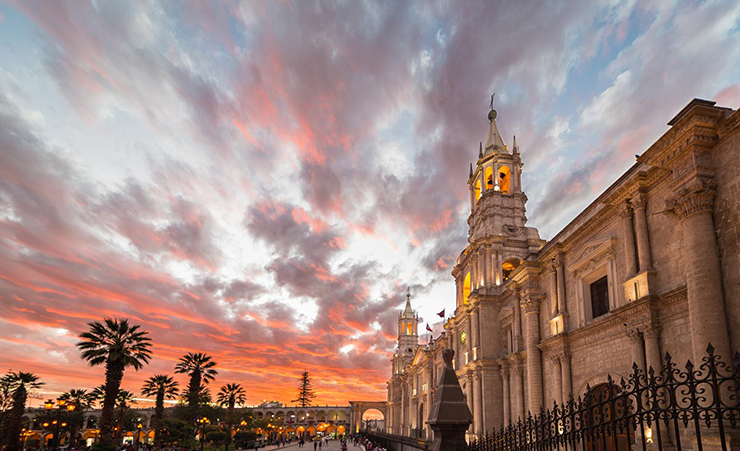
5) Colca Canyon (2-3 days)
The Colca Canyon is the second deepest canyon in the world: twice as deep as the Grand Canyon in the United States!
A landscape dominated by volcanoes, glaciers, agricultural terraces, villages, camelids and condors. It is an extraordinary region to behold in Peru and a must-see in the Arequipa region.
What to Do and See in Colca in 2 or 3 days:
- See the beautiful vicuñas of the Salinas y Aguada Blanca National Reserve
- Stop at the Cruz del Condor, a lookout point with a breathtaking view and a strategic place to see the Condor of the Andes in full flight
- Chivay and the hot springs of La Calera
- Cabanaconde, the starting point for trekking in the canyon, and its viewpoints Cejana and Achachihua
- Yanque where every morning a traditional show takes place in the main square
- Doing a trek for 1, 2 or 3 days in the canyon
If you prefer to visit the must-sees of the Colca Canyon, I recommend this tour that includes pick-up at your hotel in Arequipa, entrance fees at the Colca, stops at the main attractions of the canyon. Book it here:
Another option, perhaps even more convenient, is to take this 2-day Colca Canyon tour with transfer to Puno.
It’s ideal for not having to return to Arequipa after the Colca, you’ll save a lot of time! You can book the tour here:
- You can also do the 2 days trekking in the Colca Canyon or the 3 days trekking in the Colca Canyon with transportation from Arequipa, entrance fee to the canyon and Llahuar hot springs, guide, meals and lodging.
From Arequipa to Colca Canyon
- By bus: to Chivay (4h), Cabanaconde (6h), several departures from Arequipa terminal. Take the right side seat and you will have a view over the canyon.
- By tourist van: departure from your hotel at 3h, stop in Chivay at 6h for breakfast, then stop at the Cruz del Condor at 8h before continuing to Cabanaconde at 10h.
Where to Stay in the Colca Canyon
- Paraiso Las Palmeras: the best option in Sangalle Oasis! The perfect place to relax during the Colca Canyon trek, with a pool surrounded by lush vegetation, an on-site restaurant, and good Wi-Fi. Breakfast included, from just $26 USD for a double room with private bathroom.
- La Granja del Colca: A true gem in Cabanaconde! Perched on a cliff, this hotel offers amazing views of the canyon—even from your room—and it’s one of the best spots to see condors in the morning. There are also friendly llamas in the garden. Fantastic value for money, from just $52 USD per night.
- Casa Andina Classic Colca: For a more comfortable stay in the Colca Valley, this charming rustic hotel in Chivay offers bungalows set in beautiful gardens. There’s also a great restaurant, breakfast buffet, spa, and even a telescope to admire the southern sky. From $72 USD per night.
- Colca Lodge Spa & Hot Springs: The perfect choice for a romantic stay in the Colca Valley. With direct access to natural hot springs, a spa, restaurant, and bar, this hotel features stylish rustic rooms with garden views. From $164 USD per night.
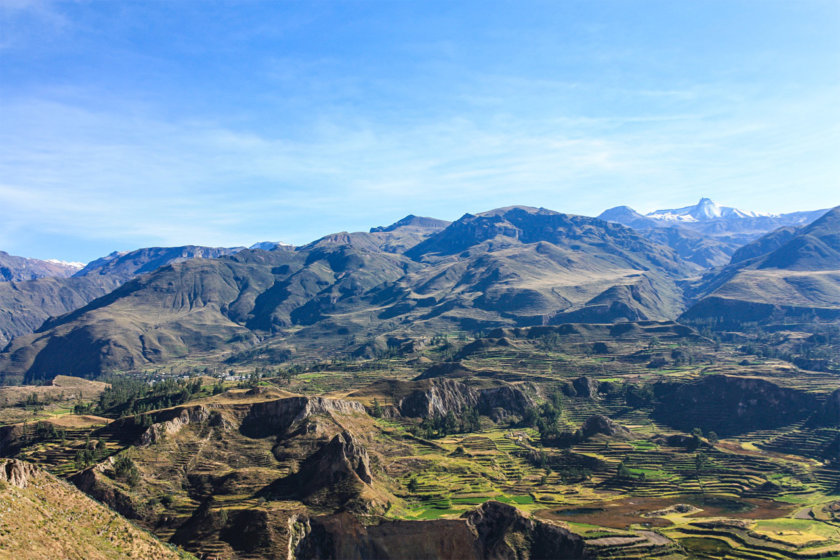
6) Titicaca (2-3 days)
Next stop on your 3-week Peru itinerary: the breathtaking Lake Titicaca, the highest navigable lake in the world!
Located at an altitude of 12,470 feet, this legendary lake straddles the border between Peru and Bolivia and is home to dozens of islands that feel frozen in time.
Puno is the gateway to Lake Titicaca. While the city itself isn’t the most charming, it hosts one of the largest folk festivals in South America: the Virgen de la Candelaria Festival, listed as Intangible Cultural Heritage by UNESCO.
Here’s what you shouldn’t miss at Lake Titicaca:
- Uros Floating Islands: Built from totora reeds, these artificial islands are unique to Titicaca. The stop is short and a bit touristy, but it’s fascinating to learn how they’re constructed.
- Amantani: A peaceful island of 3,600 residents known for agriculture and traditional textiles. Climb up to the Pachatata and Pachamama temples for panoramic views.
- Taquile: Famous for its UNESCO-listed textile traditions. Visit the main plaza, Inca ruins, sacred site of Mulsina, and the Huayllano and Collota beaches.
- Capachica Peninsula: A more off-the-beaten-path experience. The community of Llachón offers family stays and cultural immersion, perfect if you want to escape the crowds.
To truly enjoy Lake Titicaca, plan to spend at least 2 or 3 days there. That way, you’ll have time to visit multiple islands and stay overnight with a local family for an authentic experience.
This 2-day tour includes hotel pickup in Puno, boat transport, entry tickets, meals, and a night with a family on Amantani Island. A great way to discover Uros, Amantani, and Taquile all in one trip.
You can book it here:
How to get from Arequipa or Chivay (Colca Canyon) to Puno:
- By plane: You’ll need to return to Arequipa and connect through Lima. Arequipa–Lima (1h30), then Lima–Juliaca (1h40), both with Latam or Avianca.
- By bus from Arequipa to Puno: 6–7 hours with Cruz del Sur or 4M.
- By bus from Chivay to Puno: The company 4M offers a direct route from Colca Canyon to Puno, so there’s no need to backtrack to Arequipa. Departure is at 1:00 p.m., arriving at 7:30 p.m. Book here:
Where to stay in Puno
- Kaaro Hotel El Buho: A small rustic-style hotel with an excellent value for money, a few blocks from the center of Puno. Includes Wi-Fi, restaurant, and babysitting services. Breakfast included from $27 USD per night.
- Hotel Hacienda Plaza de Armas: A 3-star hotel ideally located on Puno’s Plaza de Armas. From $50 USD per night.
- Uros Titicaca Lodge: My top pick! Built on one of the floating islands of the Uros, it’s one of the most exotic hotels in Peru. If you can, I highly recommend spending at least one night here during your Peru trip. From $117 USD per night.
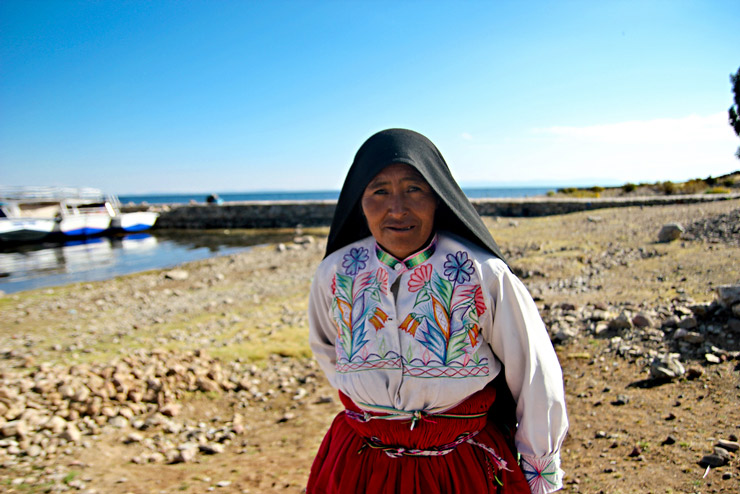
7) Cusco (1-2 days)
Former capital of the Inca Empire, Cusco is a must on any 3-week trip to Peru.
To organize your visit, check out these helpful guides:
There’s so much to do and see in Cusco—you could easily stay several days. Here’s a suggested itinerary to help you make the most of your time:
Morning: First, get your tourist ticket. It’s required to access most major attractions in Cusco and the Sacred Valley. Book it here:
Then explore the Plaza de Armas, with its stunning cathedral, Iglesia del Triunfo, and Iglesia de la Compañía de Jesús. Climb to the upper level of the latter for panoramic views of the square.
Visit the Coricancha and Santo Domingo Convent—once the most important Inca temple, later built over by the Spanish.
Afternoon: Grab lunch at one of Cusco’s many restaurants or head to San Pedro Market for local specialties at great prices.
If time allows, visit the four archaeological sites near Cusco: Sacsayhuamán, Puca Pucara, Tambomachay, and Qenqo.
- Short on time? This guided tour of Cusco includes all four Inca sites and hotel pickup. Book it here:
Wrap up your day in the artsy neighborhood of San Blas, full of white-and-blue colonial houses, artisan shops, and galleries.
Getting from Puno to Cusco:
- By plane: 1h from Juliaca with Latam.
- By train: Take the Andean Explorer—a scenic 10-hour journey running Monday, Wednesday, and Saturday.
- By bus: Day or night service, approx. 6h30. Buy your direct bus tickets here.
- By tourist bus: This option includes guided stops at Andahuaylillas Church, Raqchi, and the Pukara Museum, plus buffet lunch. Book it here:
Where to Stay in Cusco
- Backpacker La Bo’M: One of the best hostels in Cusco. Founded by Sarah, a French expat, it includes a delicious crêperie next door. Perfectly located in the charming neighborhood of San Blas, it offers good Wi-Fi, a cozy vibe, and of course, amazing crêpes to start your day! Dorms from only $13 USD and private rooms from $33 USD.
- La Casona Real Cusco: For those looking for more comfort, this charming traditional-style guesthouse is located on a quiet street just steps from the Plaza de Armas. Impeccably clean, with hot water, great Wi-Fi, and a warm welcome. Breakfast included, all from just $76 USD per night!
- Hotel Tierra Viva Cusco San Blas: In the lovely San Blas neighborhood, this upscale hotel offers spacious rooms with very comfortable beds. Its modern décor with local touches and peaceful interior courtyard make for a relaxing stay. Buffet breakfast included. From $98 USD per night!
- Antigua Casona San Blas: A chic and intimate 4-star hotel in San Blas. It features very comfortable rooms, a warm atmosphere, and a tasteful blend of modern and traditional décor. Don’t miss their Piedra & Sal restaurant, one of Cusco’s best. Excellent breakfast included. From $250 USD per night.
- Palacio del Inka, a Luxury Collection Hotel: For a romantic stay in Cusco, this 5-star gem is housed in a spectacular colonial building across from Coricancha, with roots dating back to Inca times. Enjoy the indoor pool, gym, spa, bar, and restaurant. Delicious breakfast included. From $325 USD per night.
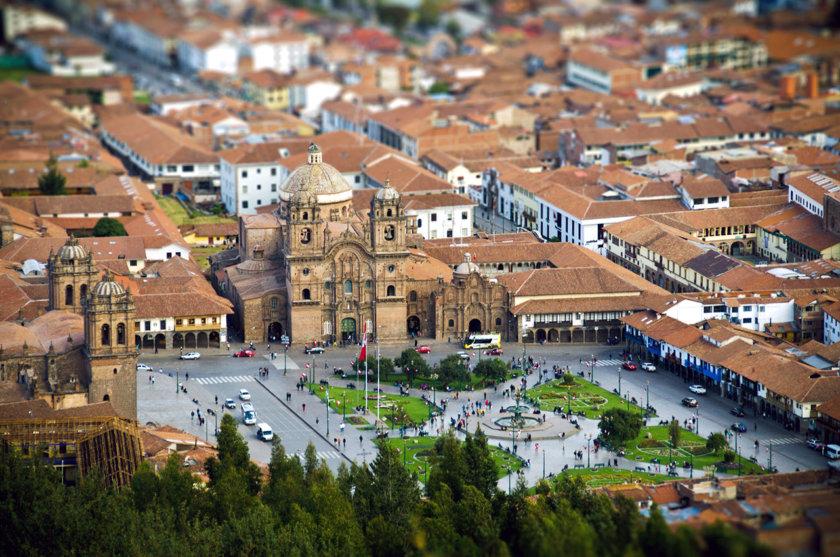
8) Sacred Valley (2 days)
Located in the Cusco region, the Sacred Valley was the cultural center of the Inca empire and there is much to see.
At two days in the Sacred Valley, I suggest that you do at least Maras and Moraychinchero, Pisac and Ollantaytambo.
There are several ways to combine it, here is one:
Day 1: Maras, Moray, Chinchero
Start at the salt mines of Maras, one of the most beautiful places in the Sacred Valley! You can see 3000 pools of water of various sizes from which salt is extracted by evaporation since Inca times.
Then head to Moray, an Inca settlement with numerous circular terraces that recreate 20 different microclimates. At the time of the Incas they were used for the cultivation of plants that came from different parts of Peru.
Explore Chinchero, a beautiful Andean village known for its traditional woolhandicrafts. It is an opportunity for you to see the process of its manufacture and the opportunity to buy clothes there.
Return to Cusco for the night.
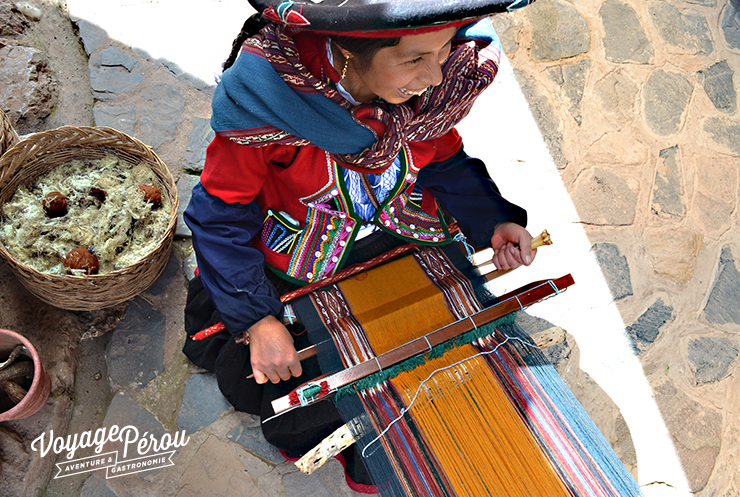
Day 2: Pisac and Ollantaytambo
Pisac y Ollantaytambo are considered the two most important places in the Sacred Valley.
I recommend devoting half a day to each place as there is a lot to see.
In the morning, head for the ruins of Pisac.
Pisac is divided into two areas, the ancient, located in the highlands, is an Inca archaeological site and the current, located in the valley, dating from colonial times.
In the ancient Inca city you will find houses, canals, a religious area, a cemetery and agricultural terraces.
It is possible to get there on foot (it is about 45 minutes of steady climb) or you can take a cab or a motorcycle cab at the bridge at the entrance of the village.
Then go to discover the market of Pisac known for its varied handicrafts (clothing, jewelry, etc…) Take a walk to see the fruit and vegetables, less touristy and more authentic!
In the afternoon, visit Ollantaytambo which served as a checkpoint during the Inca empire and provisional capital for the resistance when Cusco fell into the hands of the Spanish conquistadors.
Discover the the ruins of Ollantaytambo. Important Inca military and religious center, from this place, nestled on the hill, the views are magnificent.
Stroll through the village which is charming, with its houses and narrow streets dating from Inca times.
If you have time (the gates close at 16h30), go for a walk to Pinkuylluna. They are ancient Inca agricultural storage deposits of free access and little known to tourists.
How to go to the Sacred Valley:
- Maras, Moray: buses leave from Pavitos street in Cusco and leave you at the Maras crossroads. Cabs will be waiting there to take you to the salt mines (or salt mines + Moray). Do not forget to fix the time of return.
- Chinchero: return to the same road and take a bus to Cusco (it is on the way).
- Pisac and Ollantaytambo: the buses leave from the street Puputi in Cusco (45 min). To go from Písac to Ollantaytambo you have to take 2 buses passing by Urubamba (1h30-1h40).
If you want to see the most of the Sacred Valley in a short time, without wasting time in transportation, I suggest you to take a tour from Cusco.
I recommend this tour of Pisac, Ollantaytambo and Chinchero, with lunch included:
And this tour of the salt mines of Maras and the terraces of Moray:
Staying in the Sacred Valley or in Aguas Calientes
At the end of the 2nd day, knowing that the next day will be dedicated to the visit of Machu Picchu, the best options are:
1- Staying in Ollantaytambo which is halfway between Cusco and Aguas Calientes to spend the night and take the train early in the morning.
2- Go to Aguas Calientes to spend the night and have easy access to Machu Picchu the next day.
Where to Stay in Ollantaytambo
- Las Portadas: This is the best budget option in Ollantaytambo. A typical local house with a lovely garden and mountain views, just 5 minutes from the main square and 15 minutes from the train station. Rooms from just $23 USD with breakfast included.
- Casa de la Chola: A beautiful room in a charming lodge located just outside of town, about 10 minutes from Ollantaytambo train station. Perfect for nature lovers. From $60 USD per night, with a breakfast that’s a true treat for food lovers.
- Apu Lodge: A lovely hotel with a garden and fantastic views of the mountains and Inca ruins. Very peaceful location, with spacious and comfortable rooms that can host up to 5 people. Friendly staff. Excellent breakfast included. From $93 USD per night!
- El Albergue Ollantaytambo: A countryside-style hotel located right at the Ollantaytambo train station, perfect for catching the early train to Machu Picchu. Comfortable rooms, a beautiful green garden, an organic farm, and a peaceful setting. Onsite you’ll also find an excellent restaurant, a coffee roastery, and a craft distillery. Breakfast included. From $275 USD per night!
Where to Stay in Aguas Calientes (Machu Picchu Pueblo)
- Municipal Camping: The cheapest option is camping in Aguas Calientes, just 20 minutes from downtown. For only 15 soles per tent, you get access to restrooms, cold showers, and a cooking area. Don’t forget to bring toilet paper and food beforehand. Not recommended from December to February due to heavy rains.
- Nativus Hostel Machu Picchu: A clean and colorful hostel with a rooftop terrace, happy hour bar, and restaurant. Great location away from the noise. Breakfast included. Dorm beds from just $14 USD and private rooms from $54 USD.
- Panorama B&B: Just a few steps from the market, train station, and Machu Picchu bus stop. Offers panoramic views of the river and surrounding mountains. A comfortable hotel with a warm welcome from Christophe, the owner, always ready to share local tips. From $101 USD per night.
- Casa del Sol Boutique Hotel 4*: Ideal for a romantic stay, with rooms offering river views and jacuzzi, spa, and pool access. Breakfast and dinner included at the Manko Restaurant. From $227 USD per night.
- Inkaterra Machu Picchu Pueblo Hotel 5*: This stunning eco-lodge on the banks of the Vilcanota River is the best option for a luxury stay in Peru. Set in a private 5-hectare garden home to 372 orchid species, 162 bird species, 108 butterfly species, and even a freshwater waterfall. Breakfast and dinner included. From $448 USD per night.
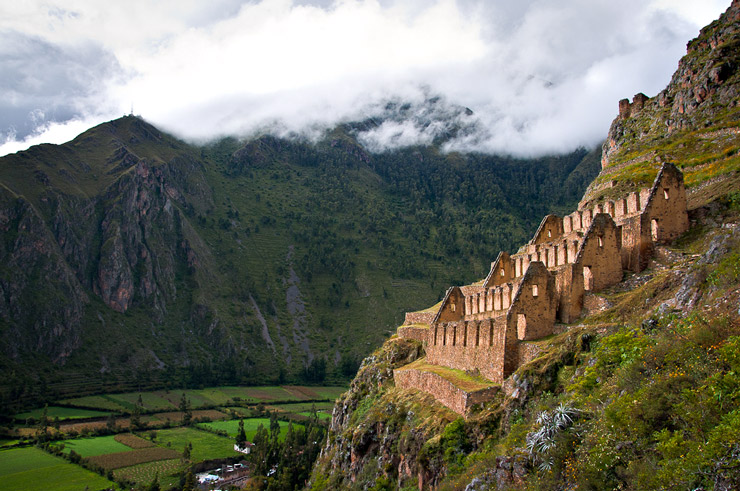
9) Machu Picchu (1 day)
One of the most awaited moments of this 3-week Peru itinerary: Machu Picchu!
Hidden high in the Andes, the majestic Inca citadel of Machu Picchu was never discovered by the Spanish conquistadors. Today, it’s not only one of the most iconic sites in South America, but also one of the New 7 Wonders of the World.
Even though many of its secrets remain a mystery, one thing is clear: Machu Picchu is an unforgettable highlight of any trip to Peru.
Get ready to walk—there’s a lot to explore: agricultural terraces, temples, palaces, the Intihuatana, the House of the Ñusta, Inti Punku, and much more.
To add a panoramic view to your visit, consider climbing Huayna Picchu or Machu Picchu Mountain. Both offer breathtaking perspectives of the site.
- Not sure which to choose? Here’s a full comparison: Wayna Picchu or Machu Picchu Mountain: Which One to Choose?
You can book your ticket here:
- Standard Machu Picchu Ticket
- Machu Picchu + Huayna Picchu Ticket (book several months in advance)
- Machu Picchu + Machu Picchu Mountain Ticket
In the afternoon, return to Cusco. You can either spend another night there or catch a flight or overnight bus directly to Puerto Maldonado.
How to Get to Machu Picchu
If possible, spend the night before your visit in Ollantaytambo or Aguas Calientes. Here are your options to get there:
- By colectivo + on foot: From Cusco (7 hrs) to Hidroeléctrica, then walk to Aguas Calientes (2.5–3 hrs). It’s the cheapest, but also the longest option.
- By train: The most comfortable and fastest way, either from Cusco (3 hrs) or Ollantaytambo (1.5 hrs).
If you already know your travel dates, it’s a great idea to book your train tickets in advance to secure your preferred schedule.
Once in Aguas Calientes, you can either take the bus (20 min) or walk (1.5 hrs) up to Machu Picchu. To save energy, I strongly suggest the bus—you’ll do enough climbing inside the site!
You can book your trek here:
- Inca Trail (4 days) – Book several months in advance!
- Inca Trail Short Version (2 days)
- Salkantay Trek (5 days)
- Inca Jungle Trek (4 days) – Perfect for thrill-seekers!
- Lares Trek (4 days)
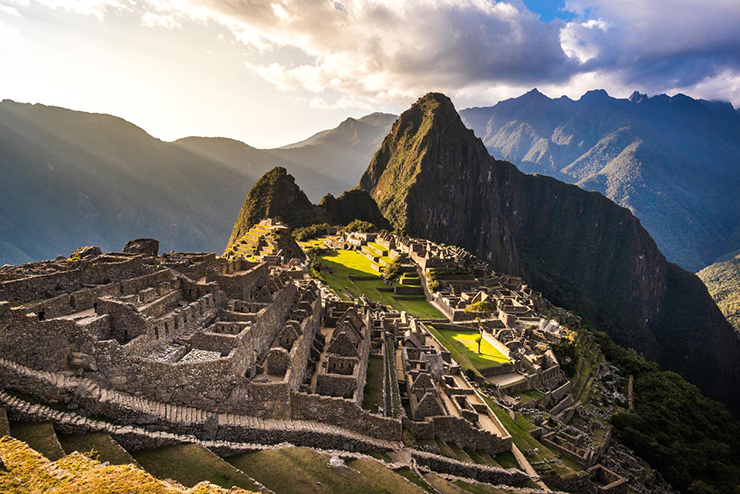
10) Amazonia (3 days)
Welcome to another world completely different from the Andes: the fabulous Amazon!
The Amazon is immense and the most practical thing to include it in your 3 week trip to Peru is to go to Puerto Maldonado to know the Tambopata National Reserve.
In addition, it is off the traditional tourist circuit of Peru and there are fewer tourists in that region.
It is a protected area in the department of Madre de Dios where an impressive biodiversity is found: an extraordinary paradise for nature lovers.
- I invite you to read: What to Do and See in Puerto Maldonado (Tambopata)
Here are the best things to do in Tambopata:
- Wildlife watching (including a multitude of colorful birds such as parrots, toucans, etc.)
- Fishing
- Night walks to see the insects and reptiles, boat ride to see the caimans.
- Boat ride on the Sandoval Lake to see the sunset and with a little luck observe the giant otters
- Visit to fruit plantations and local communities.
- Access to the observation towers at the top of the trees
Be aware that it is illegal to visit the reserve without a guide.
The most practical formula is to find a 2, 3 or 4 days tour package in Tambopata (lodging + activities). There are packages for all kinds of budgets and comfort.
I recommend this 3-day tour with nights in an ecological hotel (ecolodge), transfer from the airport, activities and meals:
It is also practical to carry a flashlight as the hours with electricity are quite limited. As for tropical tropical diseases vaccination against yellow fever is recommended, although it is not mandatory. No cases of malaria had been observed for several years in this region. Do not forget to carry a good repellent 50% DEET because insects are voracious and dengue is still present. The rainy season reaches its peak between February and March. The rains are abundant and since the roads are dirt roads, they become difficult to access. The ideal is to avoid this period if possible.
Going from Cusco to Puerto Maldonado
- By plane: it is the most practical, less than 1h flight, be careful, take a direct flight, some pass through Lima! 1 direct flight per day with Latam (11h48-12h47)
- By bus: there are some night buses (between 8h30 and 10h trip, buses leave from 19h), I recommend Cruz del Sur.
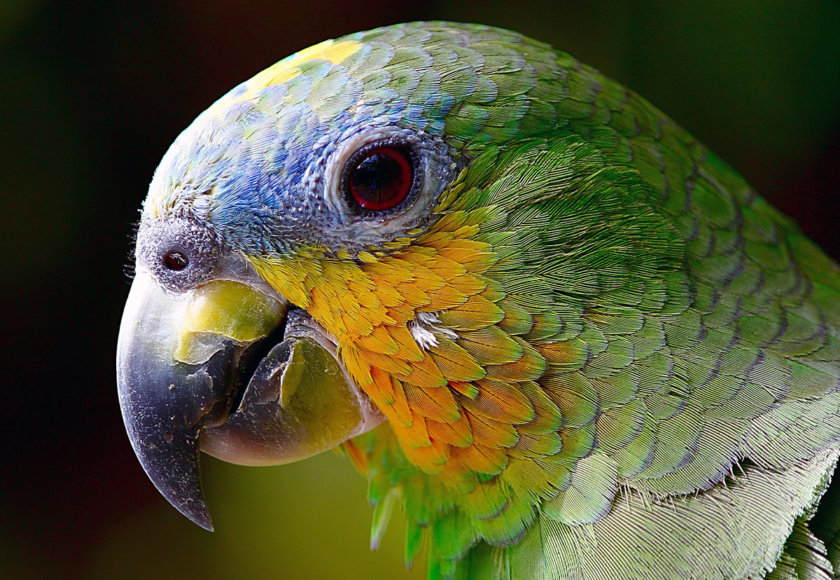
11) Huaraz (3-4 days)
Located in the Callejón de Huaylas valley in northern Peru, Huaraz is a must-see destination on your 21-day road trip to Peru.
It is considered the national capital of trekking and attracts outdoor enthusiasts who come for excursions to lakes, archaeological sites and mountains.
Here is my suggestion to visit Huaraz in 3 or 4 days:
Day 1 – Arrival and visit Huaraz
Even if you have spent a few days in the Andes before going to the Amazon, remember that every time you return to high altitude, you have to acclimatize!
It is always a good idea to to avoid doing a demanding activity the first day.
Discover the city of Huaraz, its market, its main square, the cathedral and the archaeological museum dedicated to the development of the Ancash region. In its garden you will find 140 pre-Inca monoliths.
A 1 hour walk from downtown (cab 20 soles) you will find the rataquenua viewpoint that offers a beautiful panoramic view over Huaraz and the mountains.
Day 2 – Las Lagunas de Llanganuco
Go north of Huaraz, in the direction of Llanganuco whichis composed of two lakes:
- The closest one to the entrance of the Huascaran park is the Chinancocha lake. You can take a ride on a small boat, a pleasant activity.
- Farther away is Lake Orconcocha, the smaller and less touristic. You can take the trail “Maria Josefa” (1h30) which will also allow you to see a multitude of orchids.
On the way you can stop in Caraz and taste its manjar blanco (dulce de leche), in Carhuaz for its handmade ice cream or in Tarica known as the “Handicraft Capital of Ancash”.
- The lakes are located 2h30 from Huaraz. You can take a combi Huaraz-Yungay then a bus to the lake.
The easiest option is to go with a tour from Huaraz that includes pick up at your hotel, breakfast, snacks, entrance to the Huascaran National Park, the Llanganuco lakes and Laguna 69.
You can book it here:
Day 3 – Querococha Lagoon and Chavin de Huantar
The two places are on the same route and can be easily done in one day from Huaraz.
Start at Querococha Lake in the Huascaran National Park. Located at 13,060 feet altitude, it is surrounded by imposing glaciers such as Yanamarey and Pucaraju.
Follow the route to Chavín de Huantar (1500 B.C.-300 B.C.), one of the most important archaeological sites in Peru.
Classified as a UNESCO World Heritage Site, it was the center of the chavín culture and the most important place of pilgrimage in the Andean world.
Pilgrims who could come from as far away as the jungle gathered here: imagine what that journey must have been like more than 2000 years ago!
You will see several important buildings as well as the National Museum Chavín with 14 rooms presenting the Chavín culture.
- Querococha is 1h away from Huaraz by bus and Chavin de Huantar is 3h away. It is possible to take a day tour from Huaraz that combines the two, it is very practical!
Day 4 – Pastoruri glacier
Today, discover the Pastoruri glacier (17,060 feet altitude) in the Huascaran Park, 3h from Huaraz.
The trip is worth it, you will be able to admire the Cordillera Blanca, the valley of Carpa, and the puyas raimondii, plants that can live up to 100 years!
Once there, you can go by foot or on horseback to the lagoon. The hike is not very long (45min-1h) and not very steep, but you can feel the high altitude, so take your time!
- I recommend this excursion to Pastoruri which includes pick up from your hotel in Huaraz, entrance fees and guide. You can also choose the private tour option. Book it here:
Getting from Puerto Maldonado to Huaraz The two destinations are far apart and you will have to go through Lima. Where to Stay in Huaraz If there’s one thing to keep in mind when planning a 3-week trip to Peru, it’s the transportation. Distances can be long, and travel times are often extended by the mountain roads. You’ll usually have two options: save time with domestic flights (when available) or save money with long-distance buses. While buses are budget-friendly, they often mean overnight travel and limited rest. A good compromise? Mix flights and buses so you can stay energized throughout your journey. Altitude is a serious factor when visiting Peru. To avoid altitude sickness, plan a gradual ascent and give your body time to adjust—especially if you’re flying into high-altitude cities like Cusco or Juliaca. Try to avoid intense activities on your first day at altitude. And don’t underestimate how tiring it can be to go from sea level to the Andes in just a few hours! This 3-week itinerary for Peru is designed to show you as much as possible in a limited time—but it’s also quite packed. There’s not much wiggle room for unexpected changes or downtime. If you prefer a slower pace or want to reduce transport time, here are a few ways to adjust: And if you have more time? Even better—this same route becomes much more comfortable in 1 month! Ultimately, everything depends on your interests, budget, and travel rhythm. So feel free to tweak the route to make it your own! Planning a trip to Peru? To get the best deal on your flights, I recommend using this flight comparison tool, in partnership with Skyscanner. It’s the easiest way to find the lowest prices for both international flights and domestic flights within Peru—ensuring you pay the best rate with no hassle! Renting a car is one of the best ways to explore Peru at your own pace and make the most of your trip! Personally, I always use Booking.com Cars for a few key reasons: Click the button below to find the best car rental deals in Peru: Discover all my articles about Peru: All my tips and itineraries to plan your trip in one place! 40 EPIC Things to Do in Peru (+ My Best Tips)
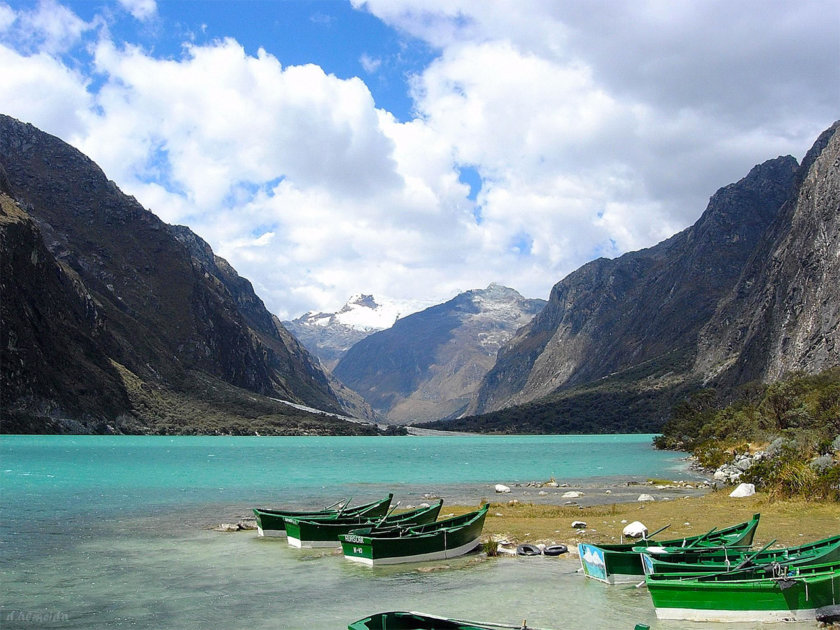
3 Weeks in Peru: My Final Tips
Watch out for long distances
Climb slowly: altitude matters
Adapt the itinerary to your travel style
Book Your Flight at the Best Price
Rent a Car in Peru
Rent a car
Book entrance tickets and guided visits
Take a travel insurance
Book a tour
✈️ Book your flightTraveling to Peru? These articles will help you!
You’re using Pinterest? Here is the picture to pin!
